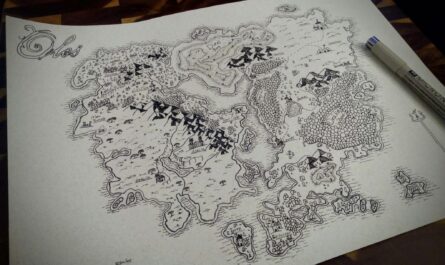Counter-Strike: Global Offensive, commonly known as CSGO, is a first-person shooter game that has captivated millions of players around the globe. At its core, CSGO is a battle of strategy, skill, and teamwork, where players are divided into two teams: terrorists and counter-terrorists. The objective is simple—eliminate the opposing team or complete mission-specific tasks. However, CSGO’s allure extends beyond the gameplay; it boasts a thriving virtual economy.
In this economy, skins, which are cosmetic enhancements for weapons, play a pivotal role. They do not alter the weapon’s performance but provide aesthetic value and status within the community. Skins can be acquired through various means such as in-game drops, csgo skin case opening sites, trading with other players, or purchasing from the Steam Market. Their rarity and condition determine their market value, creating a dynamic and sometimes lucrative trading environment. Some skins are so coveted that they can fetch prices equivalent to thousands of real-world dollars, making them highly sought-after virtual treasures.
The Thrill of the Hunt: Treasure Hunts in CSGO
Delving into the realm of CSGO treasure hunts, we uncover an exciting layer of gameplay that blends the virtual with the physical. These hunts are meticulously crafted quests that require participants to solve puzzles, decipher clues, and navigate both digital and real-world challenges to unearth hidden virtual items. Organized by community leaders or event organizers, these treasure hunts can take various forms—from online riddles leading to secret in-game locations to elaborate scavenger hunts with clues dispersed across physical locations.
The excitement generated by these treasure hunts is palpable within the CSGO community. They offer a refreshing break from the standard gameplay and inject an element of mystery and adventure. Participants not only enjoy the satisfaction of cracking codes and solving puzzles but also the thrill of potentially securing rare skins and other virtual items as rewards. The anticipation of uncovering a valuable prize drives engagement, fosters community interaction, and adds a layer of depth to the CSGO experience that extends beyond the screen. These treasure hunts create memorable experiences that players share and talk about long after the event, strengthening the game’s social fabric and keeping the community buzzing with anticipation for the next quest.
Crafting the Quest: Designing a CSGO Treasure Hunt
Creating a CSGO treasure hunt is a meticulous process that begins with a clear vision and ends with the execution of a well-thought-out adventure. Here are the steps involved in crafting an engaging quest:
- Conceptualization: Start by defining the theme and objectives of the treasure hunt. Will it be a solo mission or a team endeavor? What is the ultimate prize? The answers to these questions will shape the narrative and challenges of the hunt.
- Narrative Development: Construct a compelling story that guides players through the quest. This can involve a fictional scenario related to the CSGO universe or a thematic tie-in with real-world events.
- Challenge Creation: Develop a series of challenges that players must overcome. These can range from in-game tasks, such as reaching a certain score or completing a mission under specific conditions, to solving complex riddles or puzzles that hint at the next step.
- Clue Design: Clues should be cryptic yet solvable, guiding players through the game’s maps and hinting at real-world locations or actions they need to undertake.
- Integration of Technology: Utilize in-game tools and external platforms, such as social media or dedicated apps, to deliver clues and monitor progress.
- Testing: Before launching, test the treasure hunt to ensure that all clues are accurate, challenges are fair, and the quest is enjoyable and feasible.
By following these steps, organizers can create a CSGO treasure hunt that is both challenging and rewarding, offering participants an immersive experience that goes beyond traditional gameplay.
Real-World Integration: Blending Physical and Virtual Elements
The most captivating CSGO treasure hunts are those that seamlessly integrate real-world elements with in-game action. This fusion creates a hybrid adventure that pushes the boundaries of conventional gaming. Here’s how real-world integration can enhance a virtual quest:
- Location-Based Clues: Incorporate geographic locations into the hunt, requiring players to visit specific places, perhaps where CSGO tournaments have taken place, to find the next clue or unlock a virtual reward.
- Physical Challenges: Design tasks that must be completed offline, such as solving a physical puzzle or participating in a community event, to progress in the online hunt.
- Augmented Reality (AR): Use AR technology to overlay digital clues onto the physical world, making the treasure hunt an interactive experience that bridges the gap between the two realms.
- QR Codes and NFC Tags: Place QR codes or NFC tags at strategic locations that, when scanned, provide players with digital clues or unlock in-game bonuses.
By blending physical tasks and locations with virtual gameplay, treasure hunts become an innovative and engaging way to interact with the game and its community. This approach not only enriches the player’s experience but also encourages exploration, teamwork, and a deeper connection with the world of CSGO.
The Rewards: What’s at Stake for CSGO Treasure Hunters
Venturing into the competitive world of CSGO treasure hunts, participants vie for an array of virtual rewards that not only enhance their gameplay but also elevate their status within the gaming community. These rewards include:
- Exclusive Skins: Unique weapon skins that are not readily available through regular gameplay or the Steam Market.
- Specialized Weapons: Customized weapons that may feature rare designs or commemorative inscriptions.
- In-Game Currency: Points or credits that can be used to purchase items within the game’s ecosystem.
- Accessories: Collectible items such as stickers, patches, or badges that players can use to personalize their profiles or in-game equipment.
- Recognition: Winners often gain recognition within the community through leaderboards or social media shoutouts.
These prizes are not just digital tokens; they represent hours of dedication, strategic prowess, and the successful navigation of the treasure hunt’s intricate challenges. Securing such rewards can significantly impact a player’s reputation and in-game experience, making the pursuit of these treasures a highly motivating aspect of the CSGO treasure hunts.
Community Engagement: How Treasure Hunts Build Camaraderie
Treasure hunts within the CSGO landscape do more than just provide an entertaining diversion from standard gameplay; they foster a robust sense of community and collaboration among players. The following factors contribute to this camaraderie:
- Teamwork: Many treasure hunts are designed for teams, encouraging players to work together, share strategies, and support each other in pursuit of a common goal.
- Social Media Interaction: Platforms like Twitter, Reddit, and Discord serve as hubs for discussion, clue sharing, and collective problem-solving during these events.
- Forums and Boards: Dedicated online forums become the epicenter for treasure hunt announcements, progress tracking, and the exchange of theories and solutions.
- Live Streaming: Streamers often broadcast their treasure hunt adventures, creating a shared live experience that viewers can participate in, offering tips or simply enjoying the journey.
The role of social media and forums is pivotal, as they not only facilitate communication among participants but also extend the excitement beyond the game itself. Players bond over shared experiences, celebrate each other’s victories, and sometimes even form lasting friendships. This sense of belonging and mutual achievement is what makes treasure hunts a valuable addition to the CSGO community, enriching the social fabric of the game and creating a more engaged and active player base.
Success Stories: Highlighting Notable CSGO Treasure Hunts
Throughout the history of CSGO, several treasure hunts have captured the attention of the gaming community, setting benchmarks for creativity and engagement. One such example was the “Operation: Mindfall” event, which combined in-game clues with real-world locations, leading players on a global chase. Participants encountered a series of cryptographic puzzles that required knowledge of CSGO lore and real-world history. The outcome was a massive community collaboration, with the final prize being a set of rare skins that were only obtainable through the completion of the treasure hunt.
Another notable case was the “Easter Eggstravaganza” hunt, where players scoured the game’s maps during an Easter event to find hidden tokens. These tokens then unlocked parts of a code, which when pieced together, revealed the location of a virtual ‘golden egg’. The winner received an exclusive weapon skin with a custom design, highlighting the player’s achievement. Challenges included deciphering code languages and coordinating with other players across different time zones, showcasing the event’s complexity and the dedication required to succeed.
These success stories exemplify the intricate design and rewarding outcomes of CSGO treasure hunts. They demonstrate how well-executed events can challenge players, foster community interaction, and provide unique rewards that enhance the overall gaming experience.
Legal and Ethical Considerations in Treasure Hunt Design
When crafting a CSGO treasure hunt, it is imperative to align with legal and ethical standards to ensure fair play and respect for all parties involved. Adherence to the game’s terms of service is non-negotiable; any treasure hunt must not violate the rules set forth by the game developers. This includes avoiding any form of cheating or exploitation of game mechanics that would provide an unfair advantage to participants.
Intellectual property rights must also be respected. Organizers should ensure that all content used in the treasure hunt, such as images, text, or music, is either original, licensed, or falls under fair use. This not only avoids legal complications but also maintains the integrity and professionalism of the event.
Fair play is another cornerstone of ethical treasure hunt design. The challenges should be accessible to all participants, regardless of their geographic location or in-game resources. This means providing clues that do not favor one group over another and ensuring that the hunt’s difficulty is balanced so that all players have a reasonable chance of success.
By upholding these legal and ethical considerations, treasure hunt creators safeguard the event’s legitimacy and contribute to a positive, inclusive gaming environment that is enjoyable for everyone involved.
The Role of Technology in Enhancing Treasure Hunts
In the digital age, technology plays a crucial role in amplifying the excitement and engagement of CSGO treasure hunts. The use of advanced technological tools and platforms can transform a simple treasure hunt into an immersive experience. Here are some ways technology enhances these quests:
- Mobile Apps: Custom apps can push notifications for real-time clues and track progress, making the hunt more interactive.
- GPS Technology: Enables location-based challenges, adding a layer of physical exploration to the virtual game.
- Augmented Reality (AR): AR apps can overlay digital objects onto the real world, providing a unique way for players to find and interact with clues.
- Social Media and Live Streaming: Platforms like Twitch and YouTube allow creators to broadcast hunts live, while social media can be used for clue dissemination and community engagement.
- Online Forums and Wikis: Serve as repositories for collaborative problem-solving and information sharing among players.
- Cryptographic Tools: Online encoders and decoders assist in creating and solving complex puzzles that require a keen eye and sharp mind.
These technological integrations not only create a more dynamic treasure hunt but also allow for scalability and the inclusion of a broader audience. They enable the creation of layered puzzles that can be both globally accessible and locally relevant, providing a personalized experience for participants worldwide.
Tips for Aspiring Treasure Hunt Creators
For those looking to design their own CSGO treasure hunts, here are some best practices and pitfalls to avoid:
Best Practices:
- Start with a Clear Concept: Define your treasure hunt’s theme and objectives. Ensure it aligns with the CSGO ethos and offers a compelling narrative.
- Design Balanced Challenges: Create tasks that are challenging yet achievable, with a mix of skill-based and knowledge-based elements.
- Incorporate Varied Clues: Use a combination of direct and indirect clues, and leverage multiple platforms for a rich, multi-faceted experience.
- Test Thoroughly: Run multiple tests to ensure that all elements of the hunt work as intended and that the difficulty is appropriate.
- Engage the Community: Promote your treasure hunt across CSGO forums and social media to build excitement and participation.
Common Pitfalls to Avoid:
- Overcomplicating Tasks: Avoid making the hunt so difficult that it frustrates or alienates players. Balance is key.
- Ignoring Technology Limitations: Be mindful of the technological constraints of your participants. Not everyone may have access to the latest devices or apps.
- Neglecting Fair Play: Ensure that the hunt is accessible to all players and does not give an unfair advantage to specific groups.
- Forgetting Legal Restrictions: Stay within the legal boundaries of the game’s terms of service and respect copyright laws.
By following these guidelines, creators can craft engaging and fair treasure hunts that captivate the CSGO community and provide an unforgettable gaming experience.
The Impact of Treasure Hunts on CSGO’s Popularity
Treasure hunts have become a pivotal feature in sustaining the enthusiasm and engagement of the Counter-Strike: Global Offensive (CSGO) community. These events contribute to the game’s popularity in several ways:
- Increased Player Retention: Treasure hunts keep the game fresh, giving players new reasons to return and engage with the content.
- Community Building: They encourage collaboration and interaction within the community, leading to stronger social connections and a more vibrant player base.
- Media Attention: Successful treasure hunts often attract media coverage, bringing new players and attention to CSGO.
- Incentivization: The promise of rare virtual rewards incentivizes participation and competition, adding an extra layer of excitement to the game.
These treasure hunts not only provide a unique gaming experience but also serve as a marketing tool, generating buzz and maintaining the game’s relevance in a competitive market.
Future of Virtual Treasure Hunts in Gaming
The potential evolution of treasure hunts in CSGO and other online games is promising, considering current trends and technological advancements:
- Enhanced AR Experiences: With the growth of augmented reality, future treasure hunts could offer even more immersive experiences, blending the physical and virtual worlds in new and exciting ways.
- Blockchain and NFT Integration: The incorporation of blockchain technology could allow for unique digital collectibles as rewards, potentially adding real-world value to in-game achievements.
- Artificial Intelligence: AI could be used to personalize hunts, dynamically generating clues and challenges based on a player’s behavior and preferences.
- Global Scale Events: Advances in technology may enable real-time, global treasure hunts with thousands of participants, all connected through the game.
As technology continues to evolve, so too will the complexity and appeal of virtual treasure hunts, potentially transforming the landscape of online gaming and community engagement.
The Lasting Appeal of Treasure Hunts in CSGO
In conclusion, the integration of real-world treasure hunts into the virtual landscape of Counter-Strike: Global Offensive has redefined the gaming experience for its community. These quests blend the excitement of traditional gameplay with the thrill of solving puzzles and unearthing rewards, offering a unique challenge that goes beyond the digital battlegrounds.
The strategic design and execution of these treasure hunts have proven to be a powerful tool for community engagement, creating a sense of camaraderie and collective achievement. They not only invigorate the CSGO community with a refreshing twist on gameplay but also offer the potential for players to gain rare virtual items that boast both prestige and value within the game’s economy.
As CSGO continues to captivate audiences worldwide, the treasure hunts stand out as a testament to the game’s dynamic and evolving nature. They are a clear indicator of the game’s ability to innovate and provide compelling content that keeps the community actively involved and excited for future developments.
The success of these treasure hunts underscores the importance of creativity and community in the world of online gaming. They serve as a reminder that, even within the confines of a virtual environment, the spirit of adventure and the joy of discovery remain powerful motivators for players. As the landscape of gaming continues to evolve, treasure hunts in CSGO will undoubtedly inspire new and engaging ways to merge the real with the virtual, ensuring the game’s lasting appeal and its place in the hearts of gamers around the globe.


 by
by 

